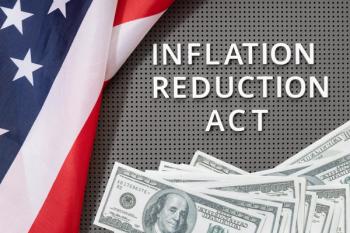
Health plans help FDA monitor drug safety through national databasestudies
Program will allow rapid access to population-based data sources tohelp ensure public safety
As part of an ongoing effort to improve the safe use of drugs in clinical practice, FDA has contracted with 4 healthcare organizations to perform drug safety studies using large databases from across the country.
GOALS OF THE PROGRAM
A COLLABORATIVE EFFORT
"FDA collaborates with investigators based in the health plans, who work directly with the health plans' electronic data," according to Richard Platt, MD, chair, department of ambulatory care and prevention at Harvard Pilgrim. "Occasionally, some electronic data is shared with FDA after patient identifiers are removed," he said. "This work is supervised by the health plan's committee to protect patients' privacy."
Most of the data from the contract with HPHC will come from 10 health plans that are members of the HMO Research Network CERT. At Harvard Pilgrim, most of the prescription data will come from its contracted pharmacy benefits manager (PBM), MedImpact.
"These proactive efforts should enhance the FDA's ability to identify and assess issues and potential risks related to pharmaceutical agents in a more timely fashion than ever before," said Terri Madison, PhD, MPH, president of i3 Drug Safety, which will lead the Ingenix program. i3 is Ingenix's pharmaceutical research and services subsidiary, which houses its drug safety group.
The Ingenix i3 program is built around a team of leading epidemiologists, complex analytic tools, and a large, longitudinal patient database, according to Ryan Stewart, vice president, strategy & communications, at Ingenix. "We will work with the FDA to monitor the safety of new drugs as well as conduct ad hoc safety studies on established pharmaceutical agents," Stewart said.
A COMPLEMENTARY APPROACH
The approach Kaiser is taking with these population data complements FDA's adverse drug reaction reporting system, according to Joe Selby, director of the Kaiser Permanente Division of Research.
"It is especially well-suited for detecting smaller increases in risk for common events," Selby said. "A good example is the Vioxx heart attack association. Few patients or physicians would have suspected Vioxx simply because a heart attack occurred while a person was taking it. Our approach compiles the experience of 10s of thousands of Vioxx users."
By linking prescription data to the subsequent awareness of various clinical events, Kaiser can calculate and compare incidence rates for people exposed to a drug with rates for similar people not exposed. "Kaiser is able to link prescription use data with hospital admission, outpatient visits, and laboratory results," he says. "Together, these data sources capture the bulk of all serious adverse events, whether they are suspected or not.
"There is a growing appreciation that spontaneous reports are not a good way to detect the small-to-moderate increases in risks," Selby added. "When these risk measures are for common events, they can amount to large numbers of excess events, but they may go unsuspected because they occur commonly, even in the absence of the drug. The approach that will be used here is designed to detect those small increases by creating comparisons between large numbers of users and similar non-users."
One common method to understand a drug's risk profile is to identify patients receiving a drug of interest-often a relatively new drug-and assess their risk of a specific outcome compared with individuals who don't receive the drug, according to Dr Platt.
"Sometimes this comparison group is receiving a different drug that is used for similar reasons," he said. "Another use of these data resources is to understand whether clinicians overall are prescribing a drug in accordance with recommended practice."
Researchers at Vanderbilt will perform drug safety studies using large Medicaid databases from the states of Tennessee and Washington. The automated Medicaid databases include 2 million enrollees, of whom more than 1 million are children, 425,000 are African-Americans, 173,000 are Hispanic people, and 20,000 are Native Americans.
Medicaid enrollees were chosen for the study because they are often under-represented in employment-based insurance databases and pre-marketing trials, according to Wayne Ray, PhD, the principal investigator of the project, and professor of preventive medicine, Vanderbilt University Medical Center, and co-investigator William Cooper, MD, MPH, associate professor of pediatrics at Vanderbilt.
"The FDA already receives reports of possible adverse drug reactions," Dr Ray said. "The agency wants to be able to quickly determine incidence rates based on these reports and whether the reports may signal more widespread drug safety problems."
Ms Walker is senior editor of Managed Healthcare Executive, a sister publication to Formulary.
Newsletter
Get the latest industry news, event updates, and more from Managed healthcare Executive.





















































